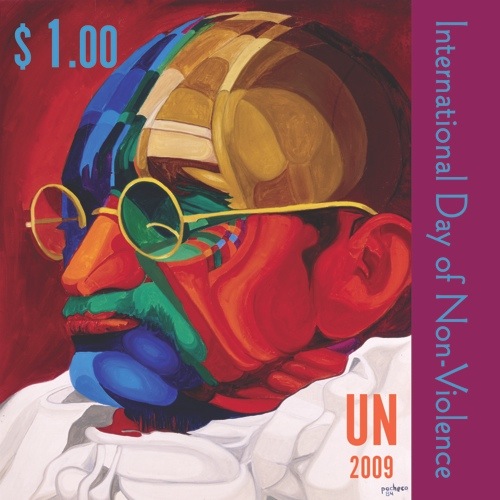"I’ve learned of the death of hunger striker Franklin Brito. It appears that Hugo Chavez now has his own Orlando Zapata" - Yoani Sanchez, August 31, 2010 on twitter
Fifteen years ago on August 30, 2020 Franklin Brito died on a hunger strike in Venezuela. Franklin was a farmer and a biologist whose land was expropriated by Hugo Chavez in 2000 according to CNN. Other news agencies place the date of expropriation anywhere between 2003 and 2004.
Brito exhausted every recourse and was repeatedly driven to the extreme option: the hunger strike. El Universal out of Caracas offers a chronology of the expropriated farmer's odyssey.
In the video below, published on October 28, 2009, after over 90 days on hunger strike that Franklin was carrying out, he explains how all of this began.
Hunger strikes are the ultimate recourse in the arsenal of non-violent resistance, and over the years around the world it has succeeded at times but in places like Cuba, Ireland, and now in Venezuela human beings have died on hunger strikes.
In Cuba the names of Pedro Luis Boitel and Orlando Zapata Tamayo are remembered as is Bobby Sands of Northern Ireland (who the Castro dictatorship built a memorial to in Cuba) and Venezuela's Franklin Brito is part of this select grouping that demonstrates the ultimate price when engaging in a hunger strike.
The American Declaration of the Rights and Duties of Man by the Organization of American States and the Universal Declaration of Human Rights by the United Nations both recognize the right to private property, despite the fact that it is frequently violated. It is a human right that is acknowledged on a global scale and is expressly stated.
Article 17 of the Universal Declaration of Human Rights states: (1) Everyone has the right to own property alone as well as in association with others. (2) No one shall be arbitrarily deprived of his property.
Article XXIII of the American Declaration states: "Every person has a right to own such private property as meets the essential needs of decent living and helps to maintain the dignity of the individual and of the home."
When
Franklin Brito's family said that he stood for "the struggle of
the Venezuelan people for property rights, access to justice, for
living in freedom," they were simply stating the facts of the matter. Brito states in the video below, which was shot on November 19,
2009, that he is defending human dignity.
"I am not doing this strike for something material or because persons have behaved badly towards me - that one could say are corrupt. I am doing this strike for dignity and justice. I believe that these are the greatest values that a human being should have."
The Venezuelan government said that Franklin Brito was mentally unstable and took him to a military hospital, and placed him under an armed guard.. The Red Cross, Caracas Clinical Hospital and the Venezuelan Psychologists' Association said that Franklin Brito was of sound mind.
The tactics Mr. Chavez is using in questioning the mental stability of
his adversaries, and smearing them, even in death, is straight out of
his Cuban mentor's repertoire.
Friends and family of Franklin Brito had best organize the facts and
evidence surrounding his case protect it and duplicate it so that it
cannot be seized and destroyed. They should engage in speaking out
anywhere and everywhere to counter the avalanche of slander and libel from regime apologists against a man who can no longer defend himself.
Hugo Chávez nationalized 2.5 million hectares
as part of a “land reform drive.” The so-called reform, combined with
increased government control over the economy, exacerbating food
shortages in Venezuela with Chavez forced to step up imports despite
abundant land and a tropical climate just like Cuba did decades ago.
It
is not madness to take extremes in the defense of liberty and justice,
but it is madness to repeat the same failed policies that have
bankrupted and destroyed nations the world over and expect a different
outcome in your own homeland.
Franklin Brito was a sane man
confronting an evil system, and through his protest embarrassed the
Venezuelan dictatorship. The regime sought to disappear him and drove him to
his death.
Three years later Hugo Chavez was dead. Nicolas Maduro, a former bus driver trained in Cuba before embracing Chavismo, became the Venezuelan dictator's successor.
Fifteen years have now passed, and Franklin Brito is not forgotten, and the evil of the regime in Caracas is now recognized around the world.
Earlier today Venezuelan opposition leader Maria Corina Machado tweeted in remembrance of Franklin Brito and his importance in Venezuela's history.
Franklin Brito is a name that Venezuelans WILL REMEMBER FOREVER. The man who challenged the regime, stood firm, and gave his own life to defend what was his, his PROPERTY, his DIGNITY, OUR RIGHTS. Today marks 15 years since his death, which has a culprit: Hugo Chávez and his obsession with EXPROPRIATING, WHICH IS STEALING.
Below is the original Spanish text.
Franklin Brito es un nombre que los venezolanos RECORDAREMOS SIEMPRE. El hombre que desafió al régimen, se paró firme y entregó su propia vida para defender lo suyo, su PROPIEDAD, su DIGNIDAD, NUESTROS DERECHOS.
— María Corina Machado (@MariaCorinaYA) August 30, 2025
Hoy se cumplen 15 años de su muerte, la cual tiene un culpable:… pic.twitter.com/ruRH4Q2VSm
















.jpg)

















